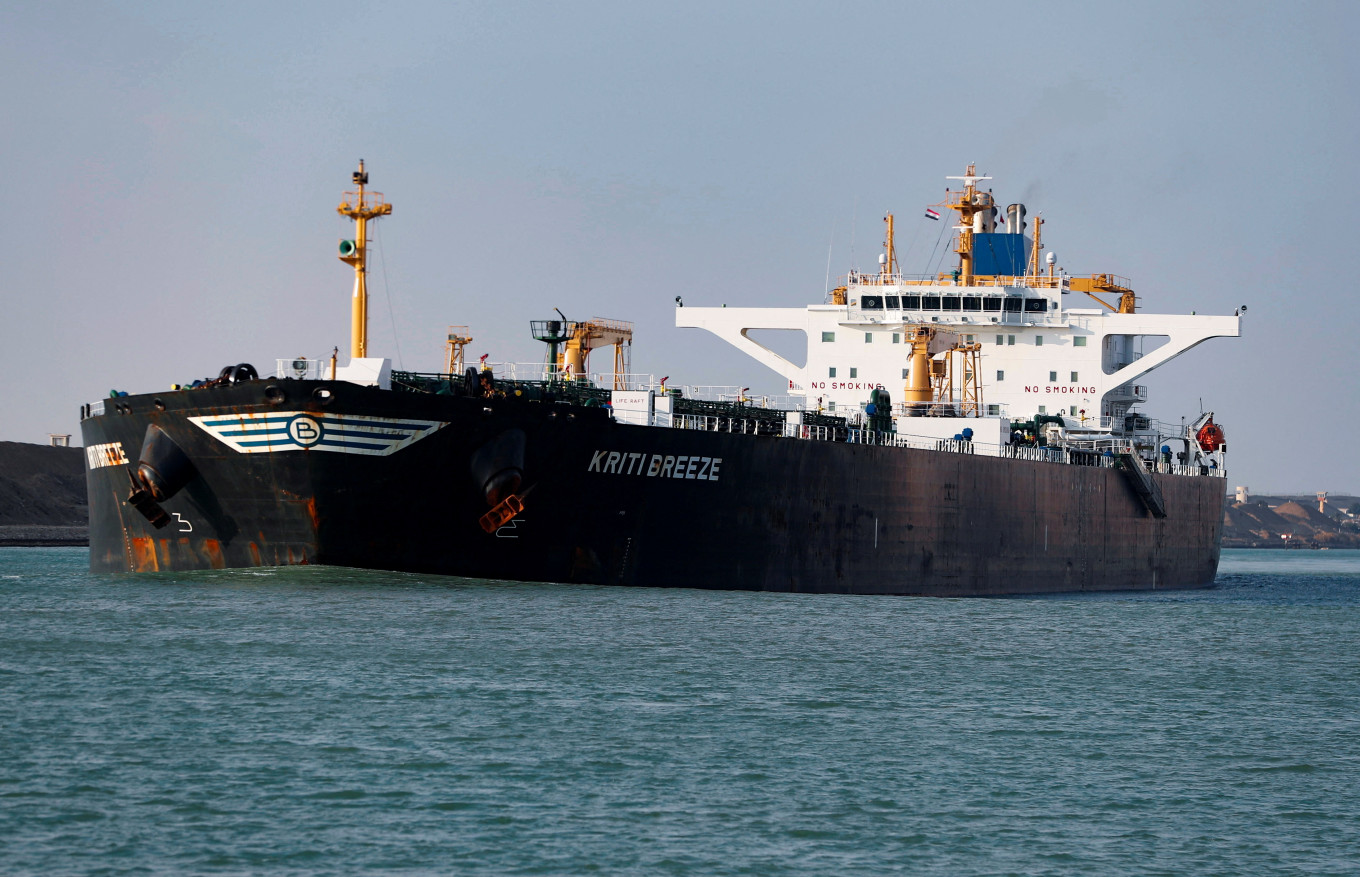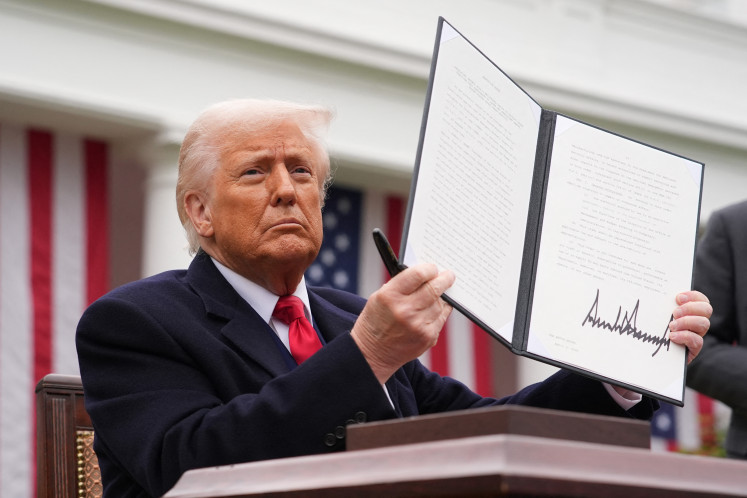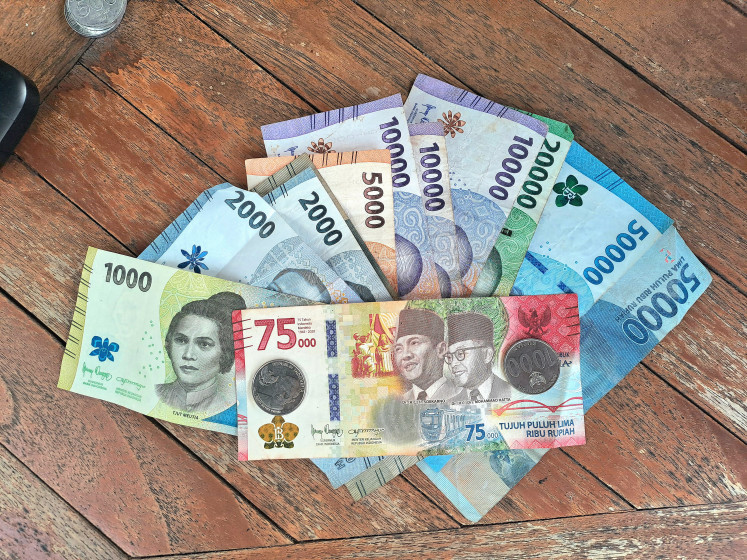Popular Reads
Top Results
Can't find what you're looking for?
View all search resultsPopular Reads
Top Results
Can't find what you're looking for?
View all search resultsStocks slide, oil jumps as Russia orders troops to Ukraine regions
Change text size
Gift Premium Articles
to Anyone
O
il jumped to a seven-year high, safe-havens rallied and US stock futures dived on Tuesday as Europe's eastern flank stood on the brink of war after Russian President Vladimir Putin ordered troops into breakaway regions of eastern Ukraine.
Brent crude futures rose 1.6 percent to $96.94, just off their overnight seven year high. S&P 500 futures fell 1.5 percent and Nasdaq futures fell 2.2 percent. Asian stocks were also down over half a percent, while Japan's Nikkei skidded sharply.
The Russian rouble briefly touched an 18-month low in early Asia trade on Tuesday, after Russia's MOEX equity index had fallen 10.5 percent the day before.
Spot gold, in contrast, hit a new six-month top of $1,911.56.
Putin on Monday recognized two breakaway regions in eastern Ukraine as independent and ordered the Russian army to launch what Moscow called a peacekeeping operation into the area, upping the ante in a crisis that could unleash a major war.
A Reuters witness saw columns of military vehicles including tanks early Tuesday on the outskirts of Donetsk, the capital of one of two breakaway regions, and Putin signed treaties with leaders of the two breakaway regions giving Russia the right to build military bases.
Washington and European capitals condemned the move, vowing new sanctions. Ukraine's foreign minister said he had been assured of a "resolute and united" response from the European Union.
But it was not immediately clear whether the Russian military action would be regarded by the West as the start of a full-scale invasion.
Following Russia's latest move "we are much closer to military intervention, which of course is going to drive a lot of the risk-off sentiment in the markets,” said Carlos Casanova, senior Asia economist at UBP, adding the short-term volatility in markets caused by both geopolitical factors and the US Federal Reserve was 'relentless'.
Casanova said the consequences would be higher oil prices, an equity sell-off, and people flocking to safe haven assets like the Japanese yen.
MSCI's broadest index of Asia Pacific shares outside Japan lost 0.66 percent in early trade on Tuesday and Japan's Nikkei tumbled 1.6 percent.
In currency markets, the safe-haven yen rose as much as 0.2 percent in Asia to a nearly three-week high of 114.50 per dollar, before paring its gains.
The euro fell 0.1 percent to a one-week low of $1.1296.
"In these circumstances, risk metrics are the driving force," said NAB head of foreign exchange strategy, Ray Attrill.
The nerves also drove US Treasury yields lower, with benchmark 10-year Treasury yields diving as much as 5.5 basis points to 1.8715 percent. Bets on Federal Reserve rate hikes also eased and the chance of a 50-basis-point hike next month fell below 1-in-5.
US policy makers have been sparring publicly about how aggressively to begin tightening.
Federal Reserve Governor Michelle Bowman said on Monday that she will assess incoming economic data over the next three weeks in deciding whether a half percentage point interest rate rise is needed at the central bank's next meeting in March.











